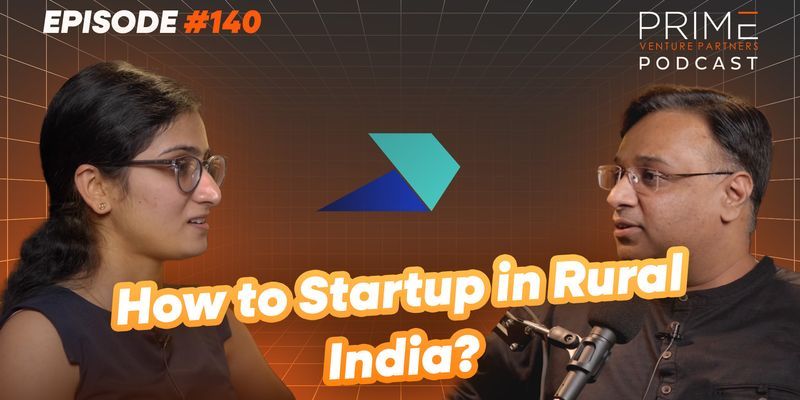The 5Vs of startup marketing mix
While creating a business plan for your startup, you will come across the 5Ps – product, price, place, and promotion ‑ of marketing mix. This has been around for a while. However, in this digital era, it’s time for startups to think differently about their marketing mix if not to change it completely.
From my experience in the startup ecosystem, I have understood that startup marketing is an extension of classical marketing, but a subject on its own and largely unorganised. Although knowing the fundamentals of marketing is a must, it doesn’t hurt to add-on and improve the existing knowledge base to keep marketing relevant to our times. It is this fitment gap that prompted me to take a further look at what we should be doing as entrepreneurs and startup marketers. Whether you are fed up of the old ways or you want to embrace the new norm, you must start worrying more about the 5Vs of startup marketing mix.

Validity
Most of us who have heard of lean startup are aware of how important the market validation is for a startup’s success. In my opinion, at a startup level, whether the customer wants the product or not is a fundamental question than what the customer wants from the product. At this stage, we should be concerned about finding out if the customer wants what we are offering than creating a detailed plan of product features, look and feel, or even its name for that matter. That’s where the fitment of 4Ps is questionable in this era, especially with respect to startup marketing. Following are few important questions that will help you chart an action plan to understand the validity of your offering, and you can instantly see the subtle differences with the 4Ps model.
- Who is interested in the solution to this problem?Essentially, you are trying to find out who are your target customers and user base (keep in mind that both are not synonymous)
- Has this problem been solved before? Why is my solution better than the others?By answering these questions, you are trying to establish who your competitors are and what your USP is. Don’t be blinded by the bias that you have no competition.
- What are the must-have features of the solution?Instead of a detailed product feature set, focus on what is essential and do it well.
- How do I assess interest for my solution?This research should be focussed on where to find your initial user base and customers, and how to draw them to your site and get them to sign-up for the beta launch. Against popular belief, I strongly suggest that you spend a little (but as little as possible) to attract your target audience to your site. PPC campaigns are found to be most useful at this stage to get the traffic you need, and they also make it easier to gauge (but not fully understand) the conversion rates and associated costs.
Viability
After you are through with validation, assess the viability of your offering. By now you should have more information about your costs, including development, launch marketing costs, and customer acquisition costs, pricing options, preferred price point, and pricing model. Having more information is better than making assumptions without any information. With these additional information, you can now find answers to the following questions to see whether your solution is viable.
- Which locations have majority of the users signed-up from? Do these markets provide a large enough base for expansion?
- Is my solution scalable? How does the economies of scale work out for my solution?
In the case of the traditional 4Ps model, pricing is the only economic viability that you are concerned about and you generally spend a lot of time to calculate margins, break-even point, and time to break-even. As a startup founder, you will soon realise a lot changes from the time you have an idea to the time when you actually launch the solution. In my opinion, all those calculations are better suited when you have the information you need to do those calculations. Until then my guess is as good as yours! So why spend so much time in doing something that we are sure will change?
Visibility
When I refer to visibility it entails visibility from a digital marketing perspective as well as visibility from a business model and strategy perspective. It has elements of retrospective performance assessment and also how well you are placed currently to anticipate future outcomes.
- Do I have enough information to establish the revenue model? If not, is there sufficient interest in the user base? If the answer to both is “No”, then I strongly suggest you take another look at what you are doing. If you can’t find any opportunity for course correction, you may have to prepare yourself to kill it and pursue something more worthwhile. If you are taking another look at what you are doing, I suggest answer these questions:
- How do I get visibility for my solution in this overcrowded world? Which channels will be better suited to reach as many target audience as possible? What will it cost? How do I do it organically?
- Do I have closed orders? Do I have enough information to create sales funnel and establish a working sales cycle? If not, then what will it take to get paying customers? If yes, then how can increase the efficiency?
- What is my retention curve? Retention curve of a solution with good product/market fit would look something like this:
*Note: Although the above source does not indicate the time scale, you can incorporate a time scale that works best for your startup based on the industry, product category, user base, and other parameters. For tech startups, given the pace of tech innovation, I would be inclined to use the time scale in “weeks”.
Over time, your retention curve should flatten out. If not, then you must investigate whether it is more expensive for you to acquire a user than quarterly revenue per user? If yes, then you should probably consider all options including pivoting or even a closing down if you are out of ideas on how to keep the startup alive (financially).
Virality
The 4P model relies on creating a promotional plan for advertisements and discounts but I find it unidirectional in this digital era, especially for startups. While ads and discounts are necessary, I don’t think they are sufficient. As entrepreneurs in the digital era, we should think more about creating evangelists.
- Is my solution able to garner organic referrals? If not are there ways I can get people to refer or invite others organically to use my solution?
- If not, what incentives can I create so that people using my solution are motivated to bring more people onboard?
Some people may be more familiar with this as growth hacking. The previous factors in the 5Vs model were all about creating plans to gain traction and retain as many users as possible. This is where you plan for growth.
Vitality
Whether you are looking out for investment or grow organically, you must ensure that your startup has the vitality it requires to be successful. For me vitality of a startup comes from the following factors:
- Passionate founders.
- Great team who are as passionate as the founders. I do want to state at this point that attracting good talent is as important as attracting customers to your startup.
- The synergy between the key players in the team.
- Marketing vigour – Have we done everything we should and could? Are we doing everything we should and can?
- Agility and pivotal capabilities – ability to learn and adapt to market needs.
- Financial strength, which can be assessed by measuring any of the following ‑ attracted capital, cash at hand, revenue generated or a good sales pipeline. Essentially you want to know whether and how long we can keep up with the burn rate.
If you have been following startup articles, then you will agree that the three most important characteristics that an investor looks for in a startup are its team, sound business model, and traction. Therefore, it is imperative that an entrepreneur plans for “vitality” of the startup in the due course of time to attract investment or to ensure that the business can grow organically.
Case Study
I found an old but interesting article about Snapchat’s initial success. It would do a world of good if you can refer to that story and see how the 5Vs fit in there.
Conclusion
As you may have noticed, unlike the 4P model, the 5V model is more dynamic and can be developed further based on the new information. I feel that it suits an agile startup of today better but it may not be able to take away the emphasis on marketing fundamentals. So, do your research but make sure you weigh in which approach works best for you. For example, for startups in an established category, the 4P model may work better as you should have sufficient market insights to create a stable plan.
(Disclaimer: The views and opinions expressed in this article are those of the author and do not necessarily reflect the views of YourStory.)











